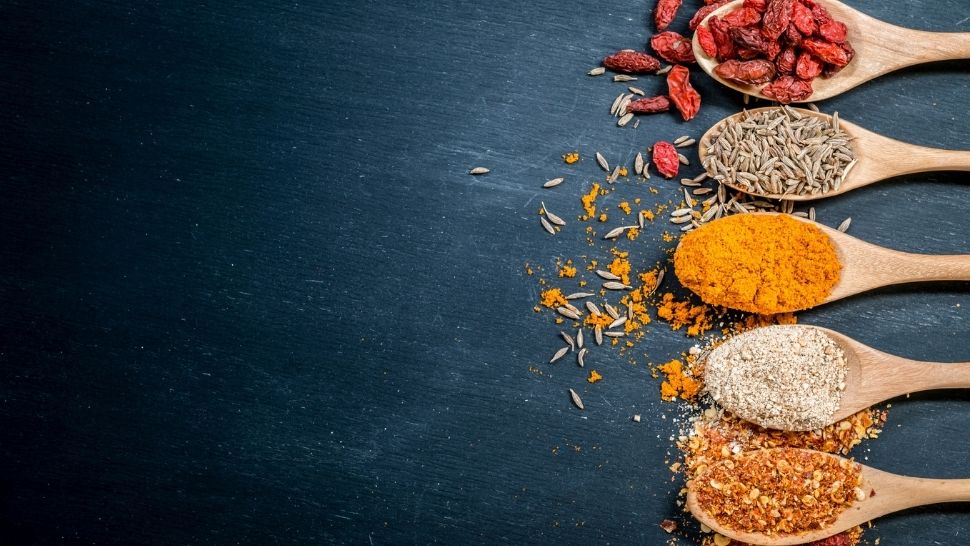
While sodium is an essential nutrient, Americans tend to eat too much of it — averaging 3,400 milligrams per day. The Dietary Guidelines for Americans, along with the American Heart Association, recommend that most people consume no more than 2,300 milligrams (1 teaspoon salt) per day and people at higher risk for heart disease and high blood pressure should keep it to under 1,500 milligrams.
More than 75 percent of the sodium in our diets comes from packaged and restaurant foods, so choosing to eat more whole foods and limit processed foods is a sure way to reduce sodium in your diet. However, reducing salt when cooking at home can move the needle on total consumption as well. At Bon Appetit, we have made a commitment to reducing salt in our food and build flavor through healthy cooking techniques such as using herbs, spices, and citrus as well as roasting or grilling to bring out natural flavors.
Experiment by adding herbs and spices both before and after cooking to see which flavors “pop” the most for your palate. Think dried oregano at the start of a marinara recipe and a sprinkling of fresh basil to finish it. Also, try toasting spices such as cumin or coriander seeds in a dry skillet until fragrant. Toasting will help amplify the flavors of the spices and will add new dimensions to the final dish. You may be surprised by how much mouthwatering flavor you can create without the help of salt!
For inspiration we’ve looked to cuisines from around the globe and gathered a few collections of herbs and spices that “harmonize” or work well together in any number of combinations. But, don’t feel like you have to follow the rules. The best part of playing with herbs and spices is creating unique blends of your own.
| Italian/Mediterranean Influenced | ||
| Herbs | Spices | Other |
| rosemary, thyme, oregano, basil, sage, marjoram, tarragon, bay leaves, parsley, mint, dill | black pepper, white pepper, anise, saffron, nutmeg, coriander, chili flakes, cardamom | garlic, shallots, onion, leeks, fennel, lemon |
| Asian Influenced | ||
| Herbs | Spices | Other |
| Thai basil, cilantro, mint, lemongrass, sorrel, curry leaves, shiso, kaffir lime leaves | ground ginger, peppercorn, star anise, mustard, cinnamon, cloves, mace, turmeric | fresh ginger, garlic, lime, chiles, green onion, wasabi, sesame seeds |
| Indian Influenced | ||
| Herbs | Spices | Other |
| curry leaves, cilantro, bay leaves, kaffir lime leaves | ground ginger, fennel, anise, garam masala, turmeric, ajwain, cinnamon, cloves, mace, saffron, coriander, chili flakes or powder, cardamom, fenugreek | fresh ginger, various peppers, tamarind, onion, fennel |
| Mexican/Latin Influenced | ||
| Herbs | Spices | Other |
| cilantro, parsley, chives, bay leaves, marjoram, oregano | chili flakes or powder, cayenne, paprika, cinnamon, cumin, achiote, anise, coriander | onion, garlic, lime, jalapeño, chipotle, other peppers, tamarind |
Sources:
Dietary Guidelines for Americans, 2015
American Heart Association, How Much Sodium Should We Eat Per Day? Heart.org, Accessed June 2016